
Teens dyed these strips of muslin with dyes made from fruits and vegetables. All photos by Emily Sun unless otherwise indicated
Have you ever thought of using food in your kitchen to create your own dyes and paints? New York kids and teens gave it a try at The Met during July's Art Explore program. They also explored different book genres and related them to works of art in the galleries.
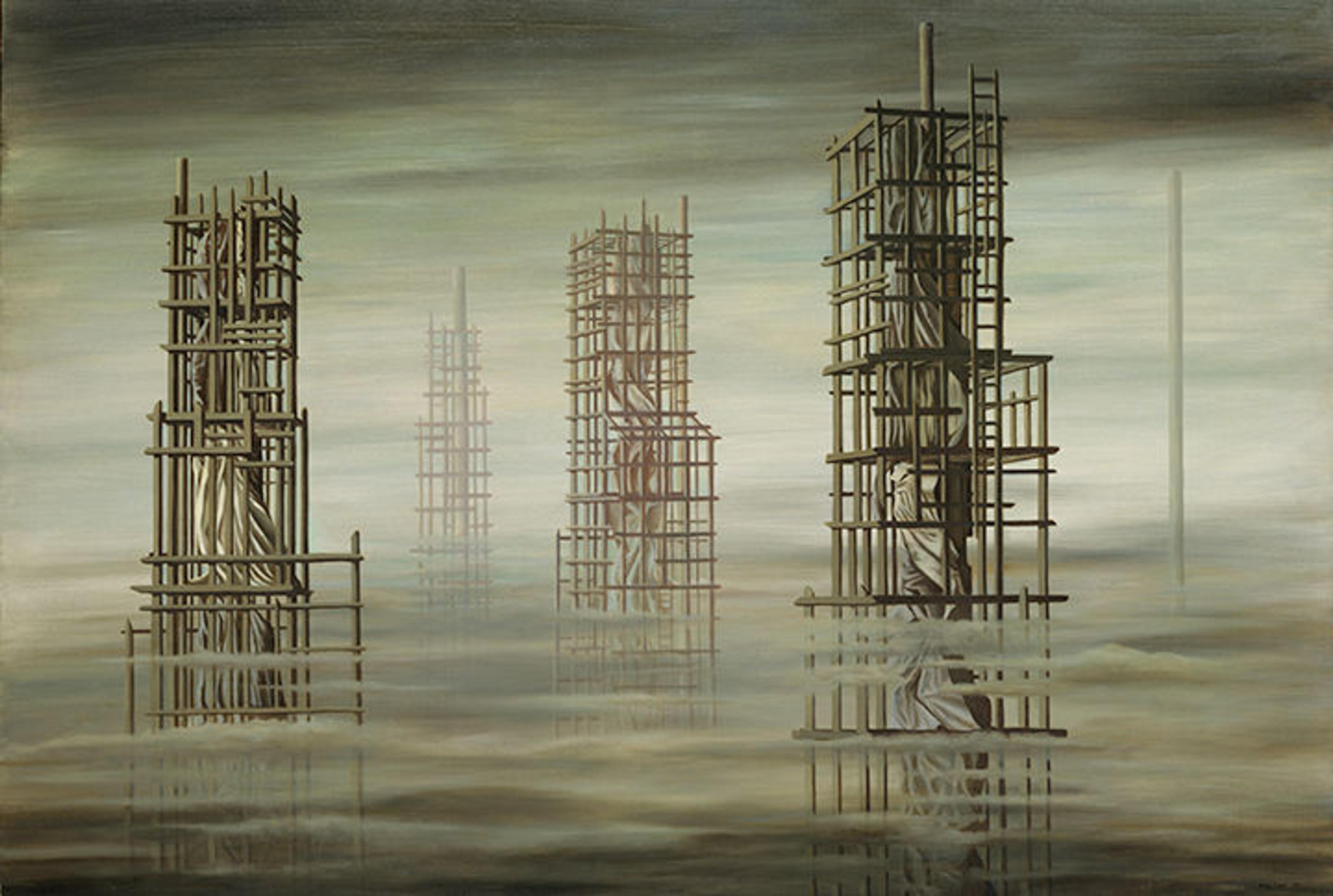
Kay Sage (American, 1893–1963). Tomorrow is Never, 1955. Oil on canvas, 37 7/8 x 53 7/8 in. (96.2 x 136.8 cm). The Metropolitan Museum of Art, New York, Arthur Hoppock Hearn Fund, 1955 (55.179)

Ranjani Shettar (Indian, 1977). Seven ponds and a few raindrops, 2017. Muslin, stainless steel, tamarind and natural dyes, 19 ft. 1 in. x 18 ft. 7 in. x 8 ft. The Metropolitan Museum of Art, New York, Gift of Tia Collection, 2018 (2018.61a-p)
On July 10, the theme of the day was science fiction. How can art—whether painting, sculpture, or science fiction stories—help us imagine other worlds? I led kids and teens to The Met's galleries of modern and contemporary art, where we talked about two works of art related to the theme of "environments." For example, they imagined their own science fiction stories set inside the artworks. What might the plot be?
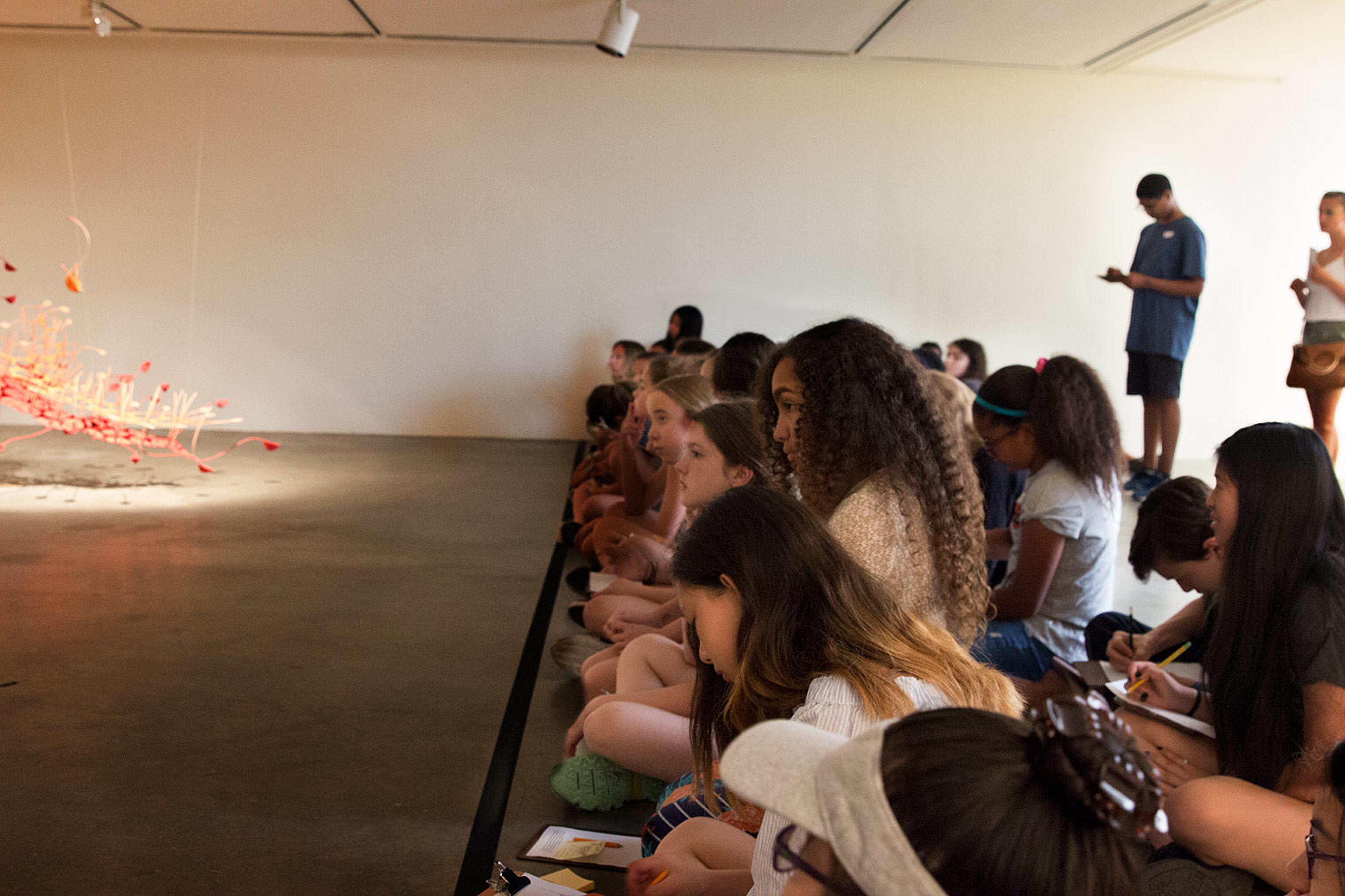
Kids and teens look at Ranjani Shettar's sculpture Seven ponds and a few raindrops in gallery 916
Kids and teens then learned about how one of the artists, Ranjani Shettar, created the sculpture Seven ponds and a few raindrops (above). She colored it with dyes made from fruit and vegetables. This dyeing technique is a tradition from Kinnala, India. Shettar was inspired by places like Kinnala, where the natural environment needs protection. Do you see the yellow and maroon colors in Shettar's sculpture? They come from tamarind fruits, mud, and the root of madder plants.

Using brushes to paint the dyes onto pieces of light-colored cloth

Dipping a strip of cloth into one of the dyes
In the studio, kids and teens learned how to make dyes from fruits and veggies. (At the end, we'll explain how you can try this at home, too!) Then, they used the already-made dyes to experiment on pieces of fabric. Some kids used the dye in the trays to soak the fabric. Others dipped their brushes into the dye and painted with it. They chose from shades of yellow (made from tamarind), violet blue (from blueberries), and red (from beets).
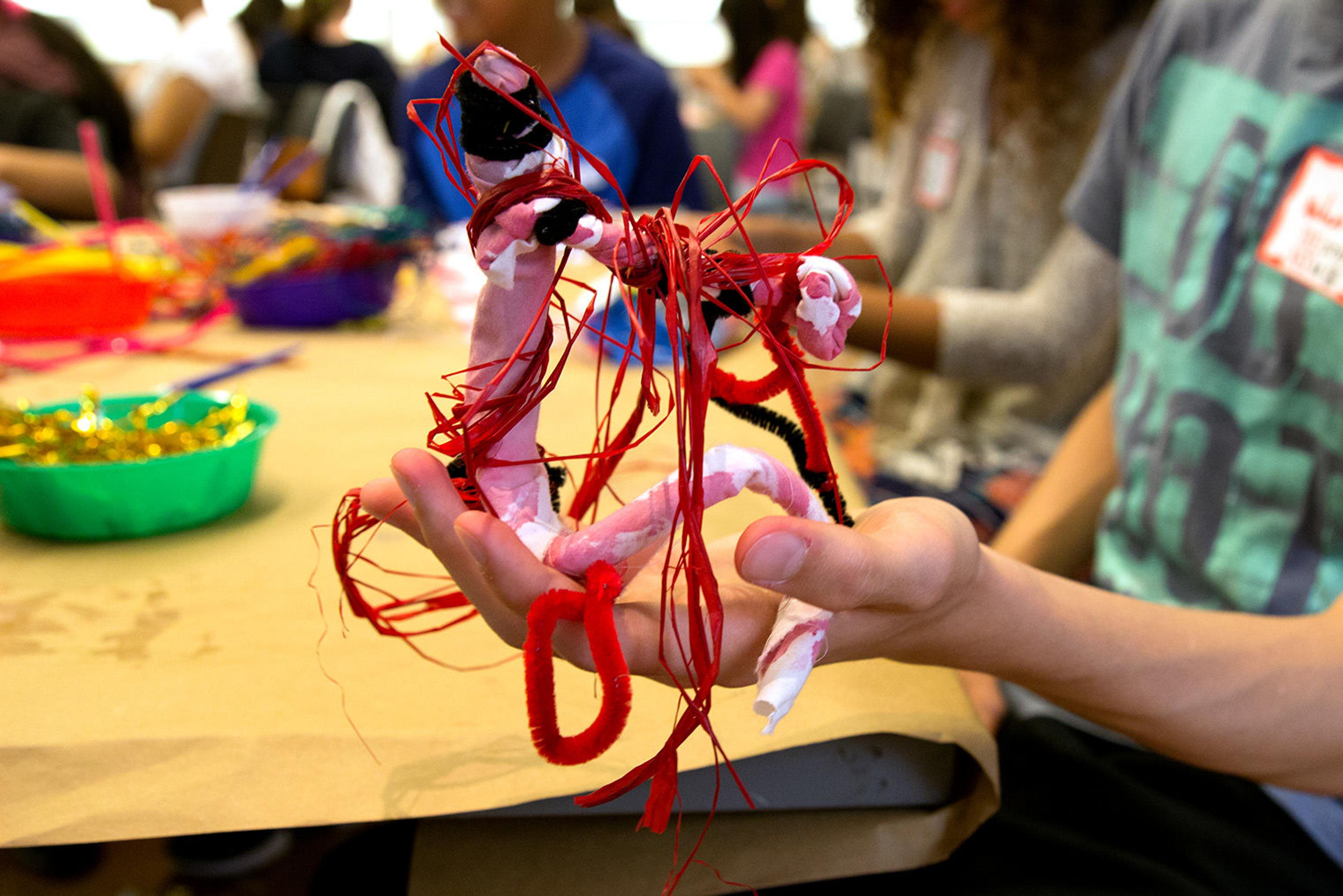
A mobile in progress
After the kids and teens talked about the artwork they'd seen in the galleries and dyed their fabrics, they began adding other materials to the cloths. Gradually, they built hanging mobiles that modeled scenes from their own science-fiction stories. One teen said, "I really liked using watercolors, and it was interesting to see how the vegetable juice worked out."
Ready to try making your own dyes and paints from food you have at home? Here is what you will need:
- Red cabbage, or other fruits and vegetables like beets, spinach, blueberries, or onions. You can even use leftover peels and scraps.
- Small saucepan or pot
- Small bowl
- Strainer
- Knife
- An adult to help with cutting up food and boiling the water
First, ask an adult to help you chop up about a cup's worth of cabbage (or other fruit or vegetable). Next, place the chopped food into the saucepan and add water to fill the pot. Ask the adult to turn the stove on at a low heat and let the pot simmer for one hour.
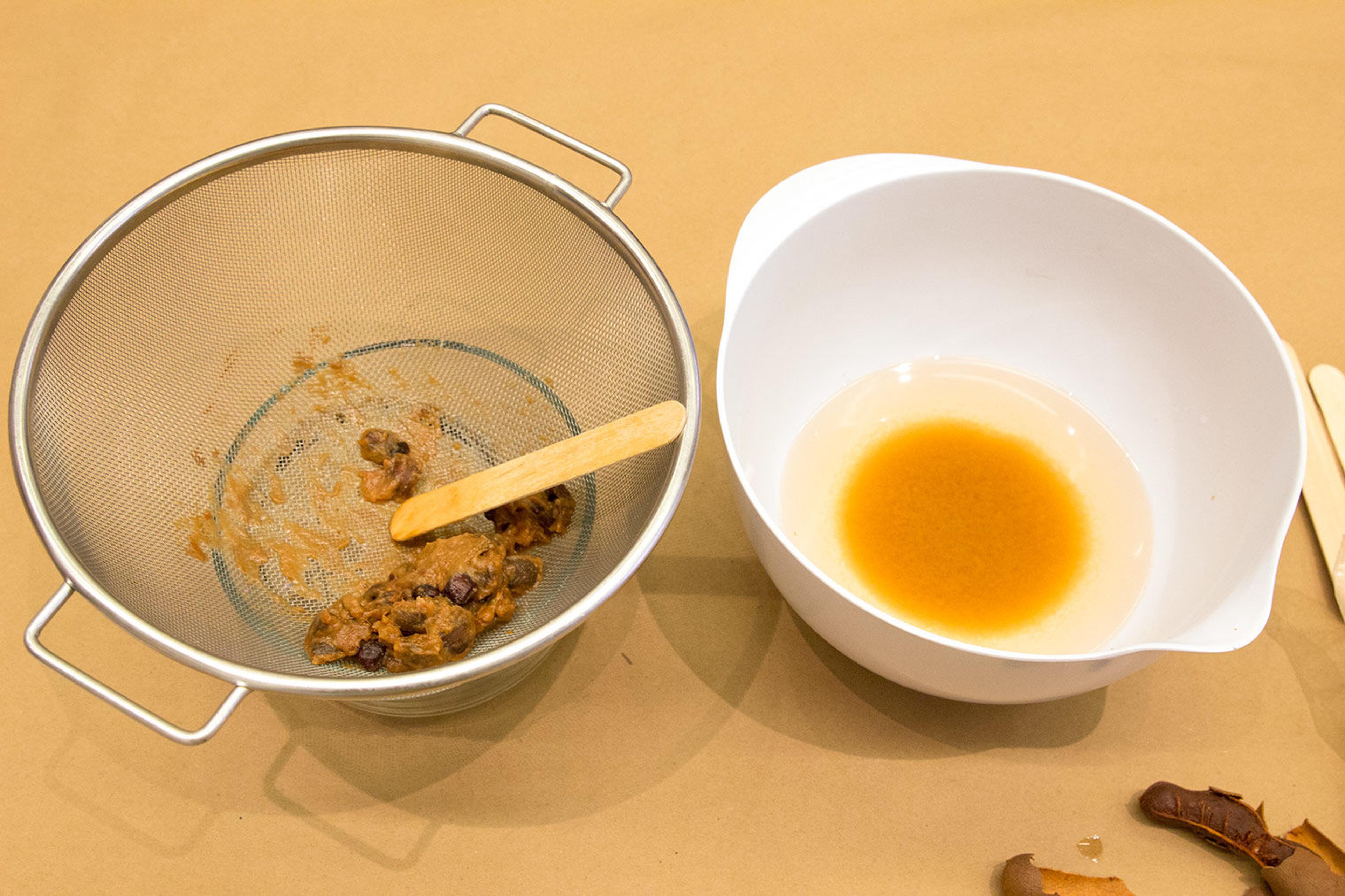
On the left is the tamarind we strained to make the yellow dye on the right
After an hour is up, look in the pot. Some of the water will have evaporated, but you'll find what's left will be dyed a new color! For example, cooked cabbage will turn the water blue. Let the water sit for half an hour to cool down. Ask the adult to help you strain the liquid out of the cooked food into a bowl. You will use only the dyed liquid.
Once you have your colored liquid, you can use it to dye light-colored fabrics like muslin. Use beets to make a red dye, spinach to make green, blueberries or red cabbage to make blue, and onions to make yellow.
Head's up: if you want to dye clothes, the color may come out in the wash. Try painting a banner from the future. Or add materials like popsicle sticks and pipe cleaners to turn the cloth 3-D. Have fun with your one-of-a kind, home-dyed creations.
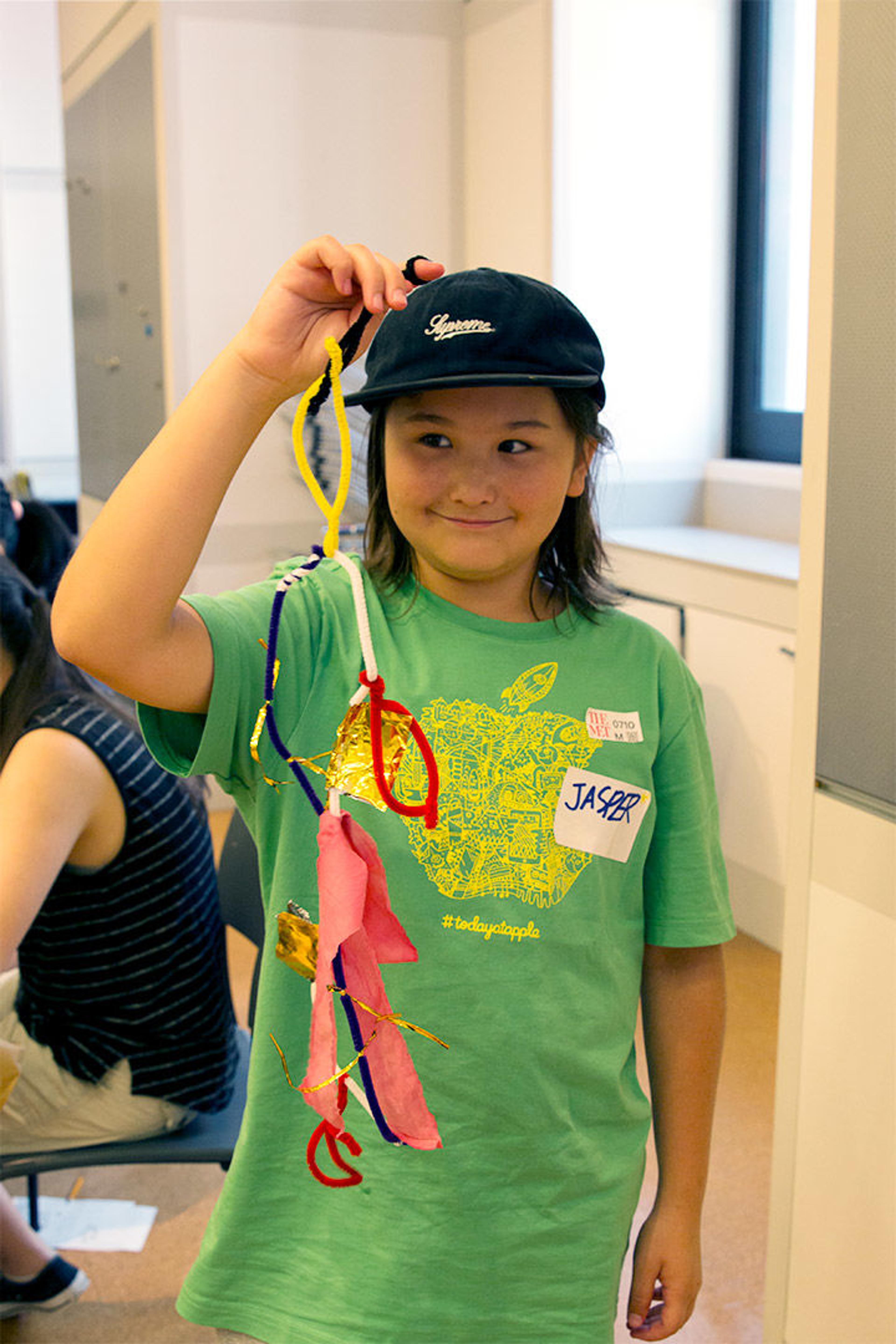
Jasper shows off the mobile he made using his dyed muslin, pipe cleaners, and twist ties

Maxine shows off her final piece made from the dyed muslin, feathers, string, and other materials
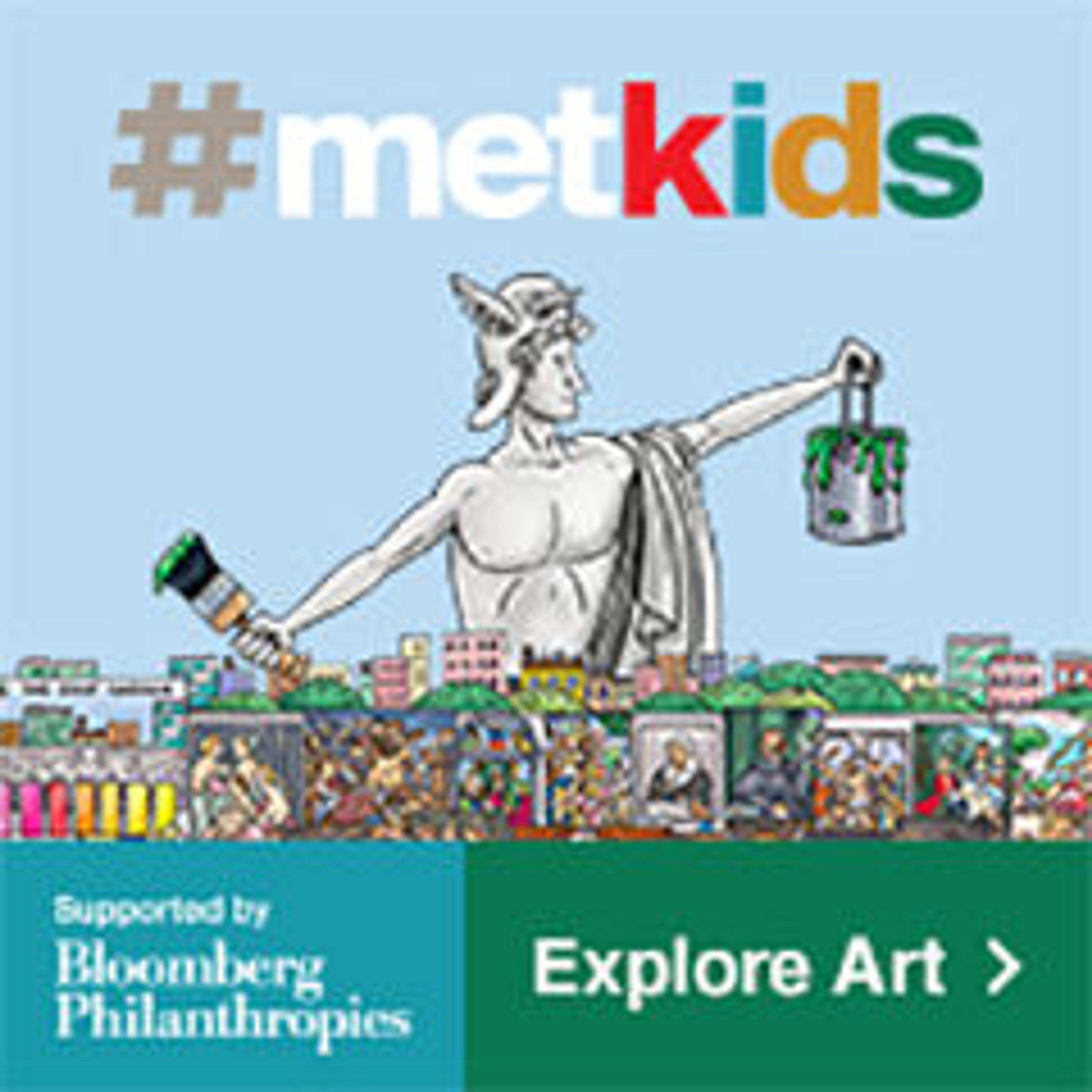
Visit #MetKids, a digital feature made for, with, and by kids! Discover fun facts about works of art, hop in our time machine, watch behind-the-scenes videos, and get ideas for your own creative projects.
